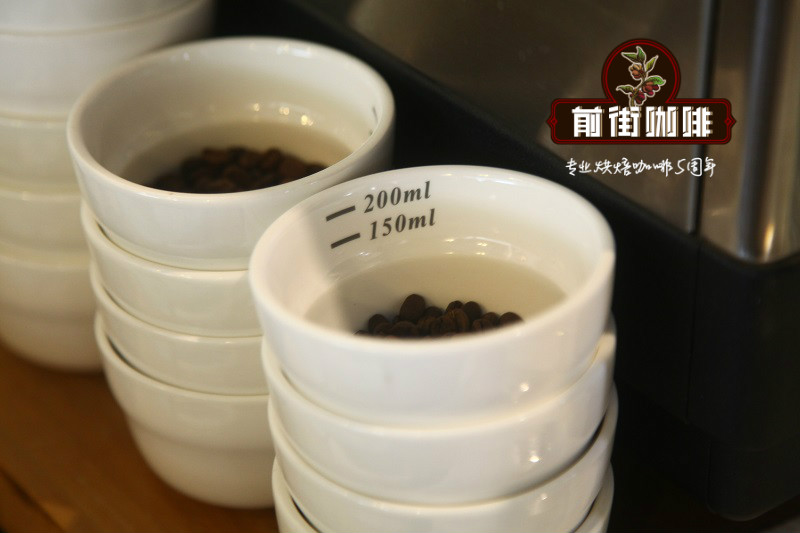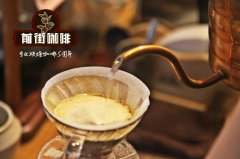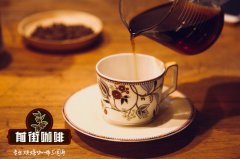Auromia from Guji producing area of Ethiopia | washed Shakissogixa G1 Fayesa Faysel Ab

Professional coffee knowledge exchange more coffee bean information please follow the coffee workshop (Wechat official account cafe_style)
Ethiopian Guji producing area Auromia | washed Shachi Sogixa G1 Fayesa Faysel Abdosh flavor?
The Gigesa, located in the town of Danbi Uddo in Shakisso, was built by Faysel Abdosh in 2014. It can be said to be a very new plant, and this year is only the third year of production. Faysel Abdosh also has a coffee export company, which can be said to be at the forefront of the Ethiopian boutique coffee trend. this processing plant is also the crystallization of Faysel Abdosh's painstaking efforts to implement its experience and knowledge as an exporter of boutique coffee, which seems to verify the ultimate pursuit of boutique coffee makers. They always have the fate of the day when they roll sleeves and pick up hoes, but therefore, the operating standards and coffee quality of this processing plant. All at the frontline level, it is no wonder that they were favored by Nordic Approach as soon as they were established. The production area of Guji has always been a production area concerned by editors, and the development in recent years has confirmed that the rise of Guji production areas is indeed one of the important trends in the development of Ethiopia in recent years. In addition to beans from larger producing areas, such as Humbela and Shaquiso, there are also excellent beans from processing plants or even single estates, which are beyond the reach of traditional Yega Cherophine producing areas. What's more, in terms of innovative treatment methods, several batches of honey treatment that we have the honor to test again this year, except for Gesha Village, are all from Guji producing areas. To seize the trend in Ethiopia, Guji can be said to be a key point that can not be ignored.
In recent years, the most eye-catching producing area in Ethiopia is Yejia Sheffield. Guji-Shaquiso is less well-known than Yejia Sheffield, but under the trend of soaring overall prices in 2015, international boutique buyers are looking for other neighboring producing areas, such as Sidamo, Limu, Jimma … Wait, wait,
Guji-Shaquiso's coffee is actually quite unique, and its coffee has also repeatedly attracted market attention. Ninty Plus launched the legendary bean Nekisse at the end of 2009, which originally means "nectar from Shaquiso" (Nectar from Shakisso). The origin and naming come from Shakisso. Another Level Up-produced Derar Ela, which is also produced in Shaquiso, was repeatedly praised by Taiwan businessmen last year, and won an excellent score of 95 Coffee Review points in April 2014.
Producing area Oromia Region
Guji (Guji Zone)
Shaquiso (Shakisso Woreda)
Processing plant Gigesa
Producer Faysel Abdosh
And about 850 small farmers nearby
1900-2100 meters above sea level
Variety Ethiopia Guyou Variety (Heirloom)
The annual rainfall is about 1500-2000 mm
Treatment water washing, African scaffolding drying
36-48hr traditional fermentation, water washing, water soaking, scaffolding sun drying for about 12 days
The strong floral aroma is mixed with the aroma of orange peel and dried grapefruit, with delicate floral aromas and sweet peaches, orange and lemon peel, then litchi quietly in the middle, and a strong and lasting coffee blossom in the end.
In the endless cup test table picked out this unique coffee, strong and penetrating coffee / white flowers and spices flavor, distinct personality, is a favorite type of editor. Coincidentally, this one is often chosen by the Nordic bean merchant Nordic Approach.
The administrative region of Ethiopia is divided into four grades, the order from big to small is Region, Zone, woreda and kebele. Most of the names of raw coffee beans follow this rule. Guji-Shaquiso, which is located in the southeast of Yejia Sheffield, a well-known producing area, belongs to Oromia Region → Guji Zone → Shakisso woreda, belonging to the regional source of coffee beans.
Just like Yejia Xuefei became well-known after becoming famous, so it became an independent producing area. Guji became an independent production area by ECX in 2010 because of its superior geographical location and cup flavor. Shakisso (sometimes translated as Shakiso) is the most attractive micro-producing area in the Guji producing area, which is located in the southeast of Yejia Shifei, with an average altitude of more than 1800 meters, fertile black soil (Vertisol), and a significant temperature difference between day and night, so that the local has all kinds of local conditions to produce high-quality boutique coffee. Almost all the sources of local coffee production belong to the form of individual small farmers. At the arrival of the production season, the ripe red transparent berries from their neighbors are picked and sent to the treatment plant, and placed on a well-ventilated African scaffolding to control the temperature and fermentation degree. After the pulp is removed, the water content is reduced to between 11.5% and 12%. When the post-processing and static operation are completed, the export is done through the competitive bidding system of the ECX Ethiopia Commodity Exchange. Local exporters or international buyers follow this system to find their favorite raw coffee beans.
Qianjie recommended cooking:
Filter cup: Hario V60
Water temperature: 90 degrees
Degree of grinding: small Fuji 3.5
Cooking methods: the ratio of water to powder is 1:15, 15g powder, the first injection of 25g water, 25 s steaming, the second injection to 120g water cut off, waiting for the powder bed water to half and then water injection, slow water injection until 225g water, extraction time about 2:00
Analysis: using three-stage brewing to clarify the flavor of the front, middle and back of the coffee. Because V60 has many ribs and the drainage speed is fast, it can prolong the extraction time when the water is cut off.
Important Notice :
前街咖啡 FrontStreet Coffee has moved to new addredd:
FrontStreet Coffee Address: 315,Donghua East Road,GuangZhou
Tel:020 38364473
- Prev

Sidamo Guji production area Sil Ai Beauty Co-operative | wash the wind of Ami sidamo Ameli G1
Professional coffee knowledge exchange more coffee bean information please follow the coffee workshop (Wechat official account cafe_style) Sidamo Guji producing area Siri Eli Beauty Co-operative | what is the flavor of washed Ami sidamo Ameli G1? Chire Ameli Mill was established in 2010 and belongs to the water treatment plant of the Seale Eli Cooperative (Chire Ameli Coop).
- Next

Tanzania Iyela Yera treatment plant washing Kent Kent AA grade flavor?
Professional coffee knowledge exchange more coffee bean information please follow the coffee workshop (Wechat official account cafe_style) Tanzania Iyela Yera processing plant washing Kent Kent AA flavor? The Yera Coffee Organization is founded by 239 small-scale coffee farmers who share a processing plant (commonly known as a central processing plant) to handle their coffee cherries, which can be found in Tanzania.
Related
- Detailed explanation of Jadeite planting Land in Panamanian Jadeite Manor introduction to the grading system of Jadeite competitive bidding, Red bid, Green bid and Rose Summer
- Story of Coffee planting in Brenka region of Costa Rica Stonehenge Manor anaerobic heavy honey treatment of flavor mouth
- What's on the barrel of Blue Mountain Coffee beans?
- Can American coffee also pull flowers? How to use hot American style to pull out a good-looking pattern?
- Can you make a cold extract with coffee beans? What is the right proportion for cold-extracted coffee formula?
- Indonesian PWN Gold Mandrine Coffee Origin Features Flavor How to Chong? Mandolin coffee is American.
- A brief introduction to the flavor characteristics of Brazilian yellow bourbon coffee beans
- What is the effect of different water quality on the flavor of cold-extracted coffee? What kind of water is best for brewing coffee?
- Why do you think of Rose Summer whenever you mention Panamanian coffee?
- Introduction to the characteristics of authentic blue mountain coffee bean producing areas? What is the CIB Coffee Authority in Jamaica?

